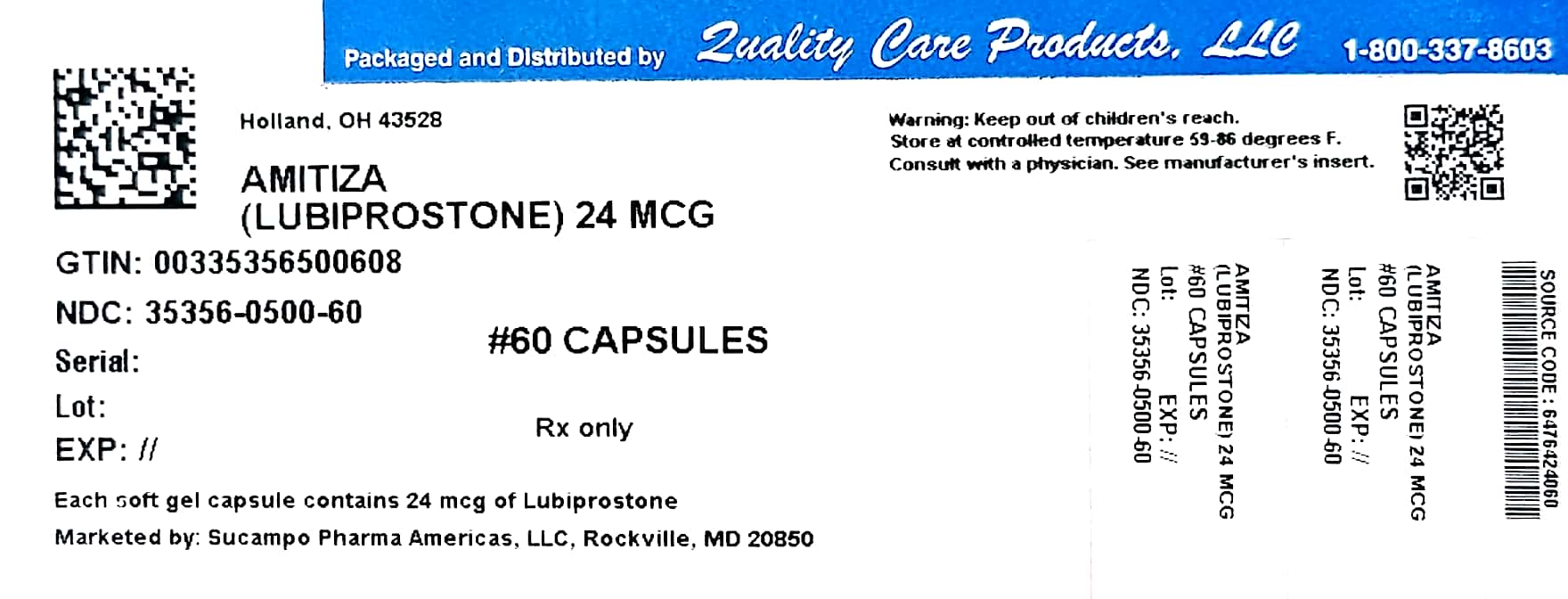


The study did not meet the primary endpoint. In this study, the change from baseline at week 8 in SBM frequency was similar in lubiprostone and placebo groups ( P = 0.842). No significant differences were observed over the 12-week treatment period in PAC-QOL and EuroQOL-5.Ī phase III, double-blind, placebo-controlled study was performed to study the efficacy of lubiprostone in patients were OIC. The adverse events were diarrhea (11.3%, 3.8%), nausea (9.9% vs. The number needed to treat was 13 patients. More patients in the lubiprostone than placebo group were overall SBM responder throughout the 12 week period (27.1% vs.
#AMITIZA 24 MCG FULL#
A responder had ≥ 1 SBM improvement over baseline frequency in all treatment weeks as well as full response of ≥ 3 SBM/week for at least 9 of the 12 weeks of treatment. The primary endpoint was overall SBM response rate. In this study 431 patients were randomized to lubiprostone 24 μg or placebo twice daily for 12 weeks. No lubiprostone related serious adverse events were reported.Īnother phase III, randomized, double-blind, placebo-controlled, parallel-group study was performed to assess safety and efficacy lubiprostone in patients with non-methadone opioid associated constipation. The most common treatment related adverse events were nausea (16.8% vs. Similarly, improvement in constipation symptoms and severity showed greater improvement in the lubiprostone than placebo group. The increase in SBM from baseline was higher in the lubiprostone treated group than placebo at week 8 ( P = 0.005) and overall ( P = 0.004). The primary endpoint was change from baseline in SBM frequency at week 8.
#AMITIZA 24 MCG TRIAL#
A prospective, multicenter, double-blind placebo-controlled trial enrolled 418 patients to lubiprostone 24 μg or placebo twice daily for 12 weeks. Three large randomized controlled studies have been performed to assess the efficacy and safety of lubiprostone in OIC in non-cancer patients. These findings suggest another mechanism for lubiprostone’s observed clinical effects on gastrointestinal motility. However, in mice, lubiprostone caused an increase in contractility of circular but not longitudinal small intestinal smooth muscles. It has been suggested that increase in peristalsis and acceleration of small bowel and colon transit by lubiprostone is due to increase in water secretion in the lumen. In mice it has been noticed that methadone inhibits lubiprostone stimulation of CIC-2 chloride channel. There is limited effect of lubiprostone in methadone-induced constipation. There is evidence that lubiprostone may reverse morphine induced anti-secretory effect through its direct action on mucosal chloride channels. Opioids decrease fluid contents in the intestine. It increases fluid secretion in the gastrointestinal tract by stimulating the cystic fibrosis transmembrane regulator and type 2 chloride channels in the apical membrane to secrete chloride and water in the lumen. Lubiprostone is a bicyclic fatty acid derived from prostaglandin E1.

Tuteja, in Clinical and Basic Neurogastroenterology and Motility, 2020 Lubiprostone (Amitiza®, Takeda)


 0 kommentar(er)
0 kommentar(er)
